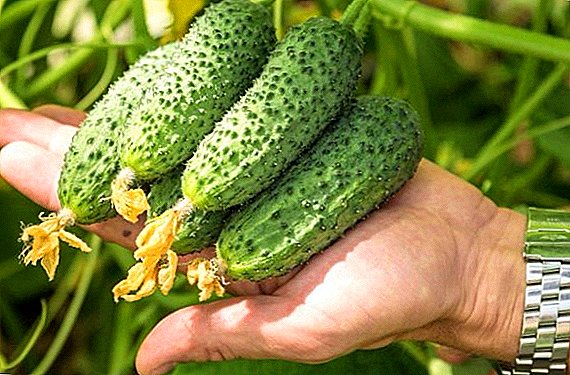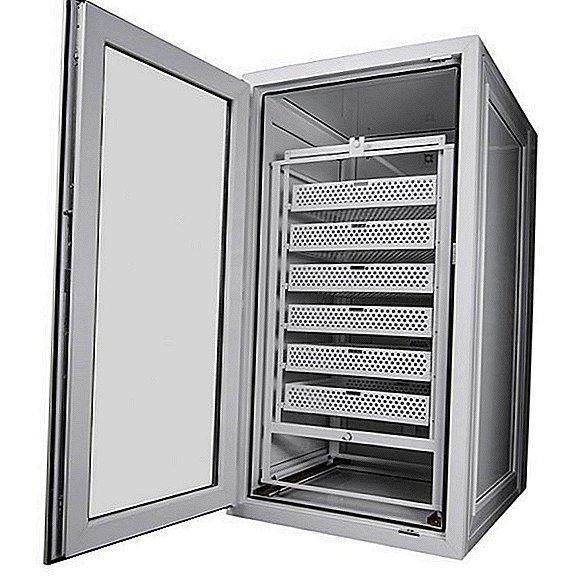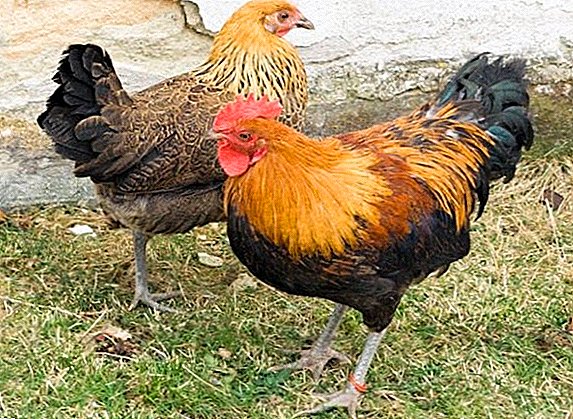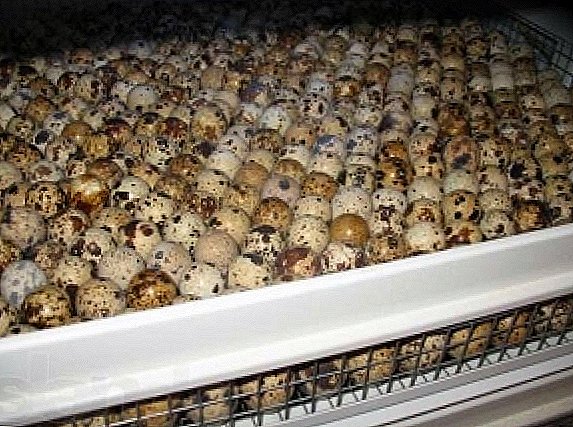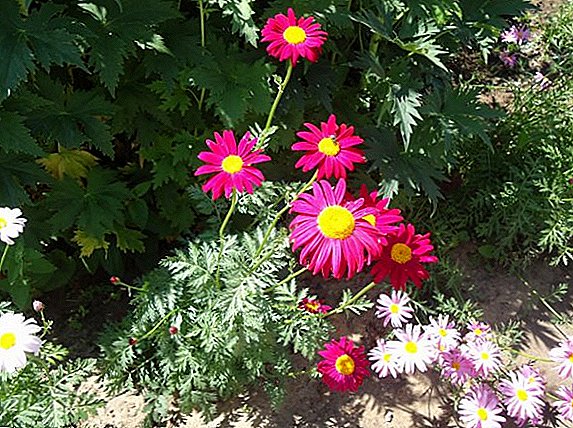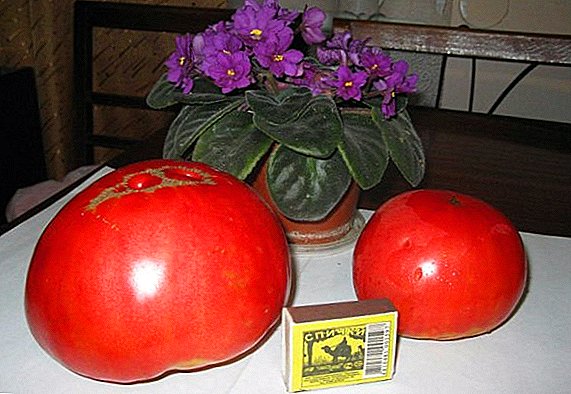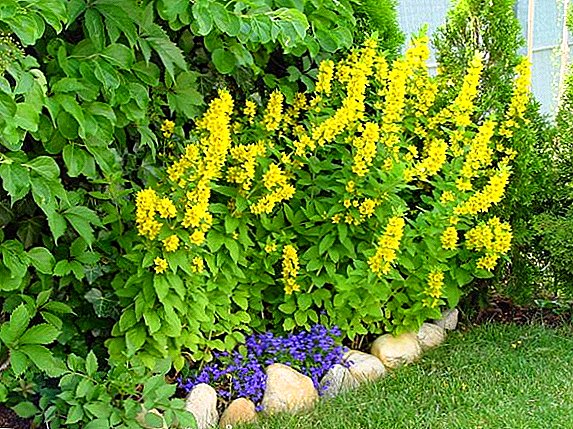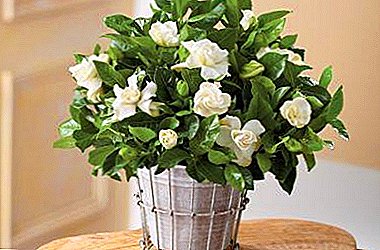
Gardenia - the most beautiful exotic shrub, reliably settled down in the homes of almost all growers.
Competent care of the plant, including timely transplantation, will help maintain its health and maintain a high decorative effect.
In this article we will tell in detail about all the nuances of transplanting gardenia, namely, when it is better to do it, what kind of soil and pot is needed, as well as about competent care of the plant after the procedure.
When is a transplant required?
It is obligatory to transplant gardenia brought from the store, as the transport soil can not long serve as a source of nutrition for the plant. Emergency transplant is performed when the flower is affected by diseases or pests.
Preparatory measures
- Soil plenty of water.
- Carefully pull the plant out of the pot along with the earthy ball.
 Place in the basin with warm water for about an hour, in order to maximize the substrate behind the roots and the plant is saturated with moisture.
Place in the basin with warm water for about an hour, in order to maximize the substrate behind the roots and the plant is saturated with moisture.All manipulations should be carried out with utmost care, gardenia is a very delicate flower with a fragile root system, which perceives any, even insignificant effect as strong stress.
- Capacity for disembarkation should be of small diameter, two or three centimeters more than the previous one. Do not choose too deep a pot, it can lead to stagnation of water. Preference should be given to a ceramic or plastic pot with the obligatory presence of drainage holes. The container before filling the substrate into it should be necessarily treated with a solution of potassium permanganate.
Priming
- The soil for gardenia should be fertile, light, loose and acidic.
- Humidity plays a big role in the healthy life of gardenia, so the ground must be able to retain moisture.
- Ready soil can be purchased at flower shops. Suitable for a special composition for gardenia, as well as a soil mix for azaleas or a universal soil for flowering plants.
- To prepare the soil yourself, you will need to mix hardwood, coarse sand and peat in equal parts. Add perlite or vermiculite as a baking powder. All components before mixing pour boiling water.
When is the procedure performed?
The optimal time for the procedure is February or October, that is, before or after a period of active growing season. But if emergency rescue measures are required or the plant is acquired in another season, then transplantation is carried out as needed.
After the purchase
Replant the plant immediately after it is brought from the store should not be.
- First, blooming specimens and transplant manipulations will most often come on the market.
- Secondly, gardenia, like any other plant brought back into the house, should be placed in quarantine, separate from other representatives of the flora in the room, so that in case of detection of insect pests, it is possible to carry out their rapid destruction and prevent infection of other plants.
- Thirdly, transportation and changing the location for the plant is always stressful, you need to give it time to recover.
After three or four weeks, you can transplant the flower by transferring it to a new spacious pot with suitable soil. At the bottom of the pot it is necessary to organize the drainage of expanded clay or small pebbles.
Transplantation takes place as follows:
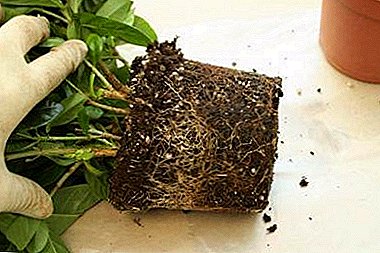 Gardenia plentifully pour and leave for some time to remove from the pot it was easier.
Gardenia plentifully pour and leave for some time to remove from the pot it was easier.- Turn the pot over and, lightly tapping on the bottom, remove the plant.
- If it is assumed that the roots of a flower can rot, then you need to soak it in a basin with warm water so that the roots are freed from the ground and then inspect them for damage. Cut off the affected areas.
- Put a drain on the bottom of the pot.
- Place a gardenia in it with a lump of earth and cover it on the sides with fresh soil, a little tamping it down.
- Lightly moisten.
How to plant a flower at home?
If more than one copy of gardenia is planted in the tank, seating is carried out, This is done as follows:
- The flower, together with the earthy ball, should be pulled out of the pot and soaked in water.
- Remove the earth, sever the roots of individual plants. If they are strongly intertwined, you can use scissors or a sharp knife.
- If the root system is partially damaged, dried or yellowed - all unhealthy areas need to be removed.
- Put the roots in the solution of Kornevin, it will stimulate the growth of the root system and increase the immunity of the plant.
- At the bottom of the new pot lay drainage, a layer of four to five centimeters.
- Capacity filled with prepared soil.
- Plant placed in the center of the pot and fall asleep on the sides of the ground.
- It is important not to deepen the stem more than a centimeter, otherwise rotting processes may begin.
Important! The pot and the mixture are always prepared in advance in order to eliminate the winding of the delicate roots in the process of transplanting.
How to care after?
After the procedure, the plant should be put in place with moderate lighting and the temperature in the room should be kept at +23 +25 degrees. Spring gardenia can be put on the balcony or simply ventilate the room by opening the windows. The main thing - to prevent drafts.
After transplantation it is impossible to carry out abundant watering, the plant must be restored within two weeks. Further care is regular watering, as the soil dries out, dressing before the beginning of the flowering period and air moistening.
What if something went wrong?
Not mass abating and yellowing of the leaves immediately after transplantation is the norm and does not mean that the procedure was carried out with errors. The plant simply adapts after experiencing stress. If a flower cannot come to its senses for a long time, then it is necessary to resort to regular spraying of the space around it and in no case contribute fertilizing during the bad state of health of the plant.
The procedure of transplanting gardenia is not that complicated if you follow the instructions. The main condition is the maximum accuracy and care in relation to the fragile exotic plants.


 Place in the basin with warm water for about an hour, in order to maximize the substrate behind the roots and the plant is saturated with moisture.
Place in the basin with warm water for about an hour, in order to maximize the substrate behind the roots and the plant is saturated with moisture. Gardenia plentifully pour and leave for some time to remove from the pot it was easier.
Gardenia plentifully pour and leave for some time to remove from the pot it was easier.